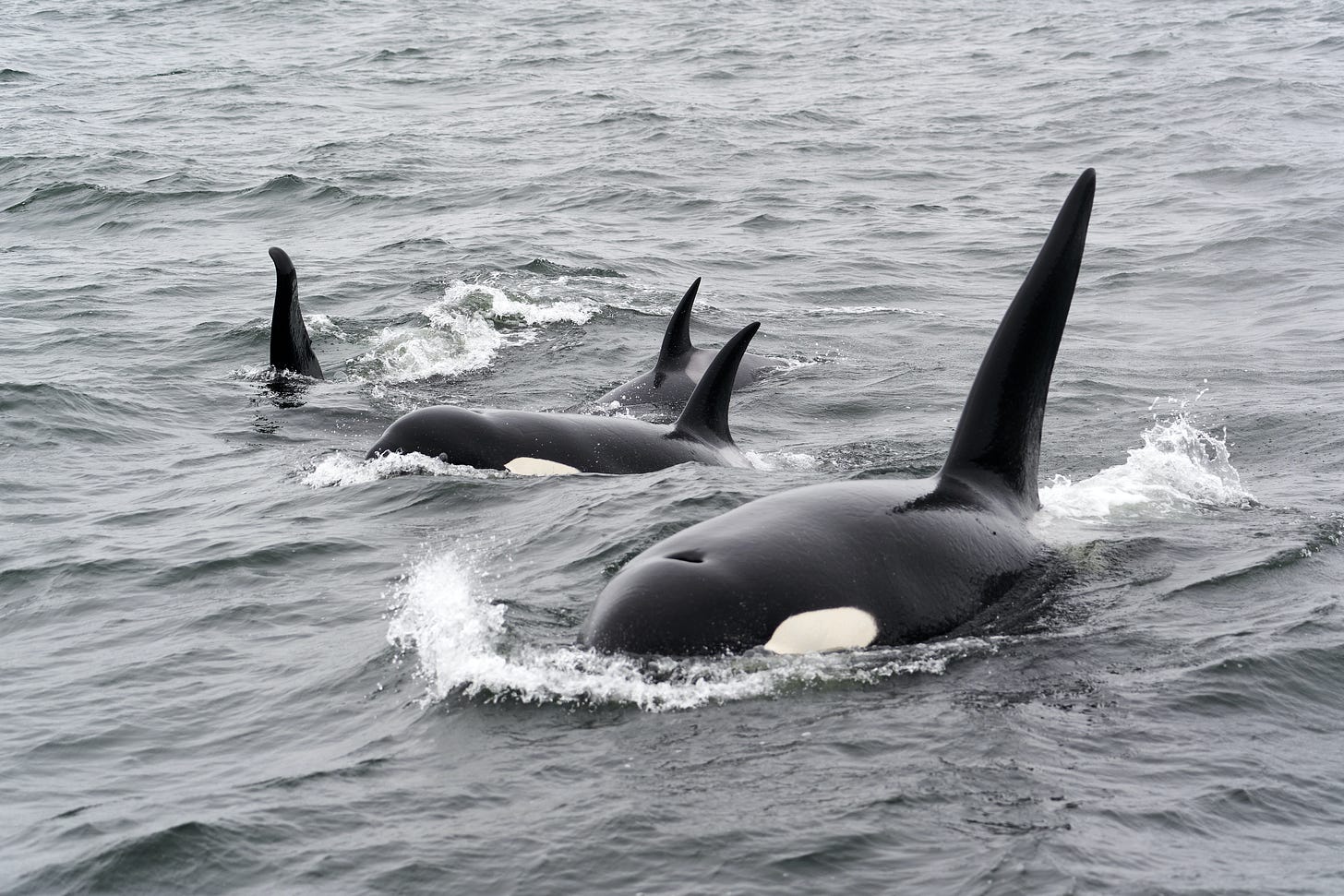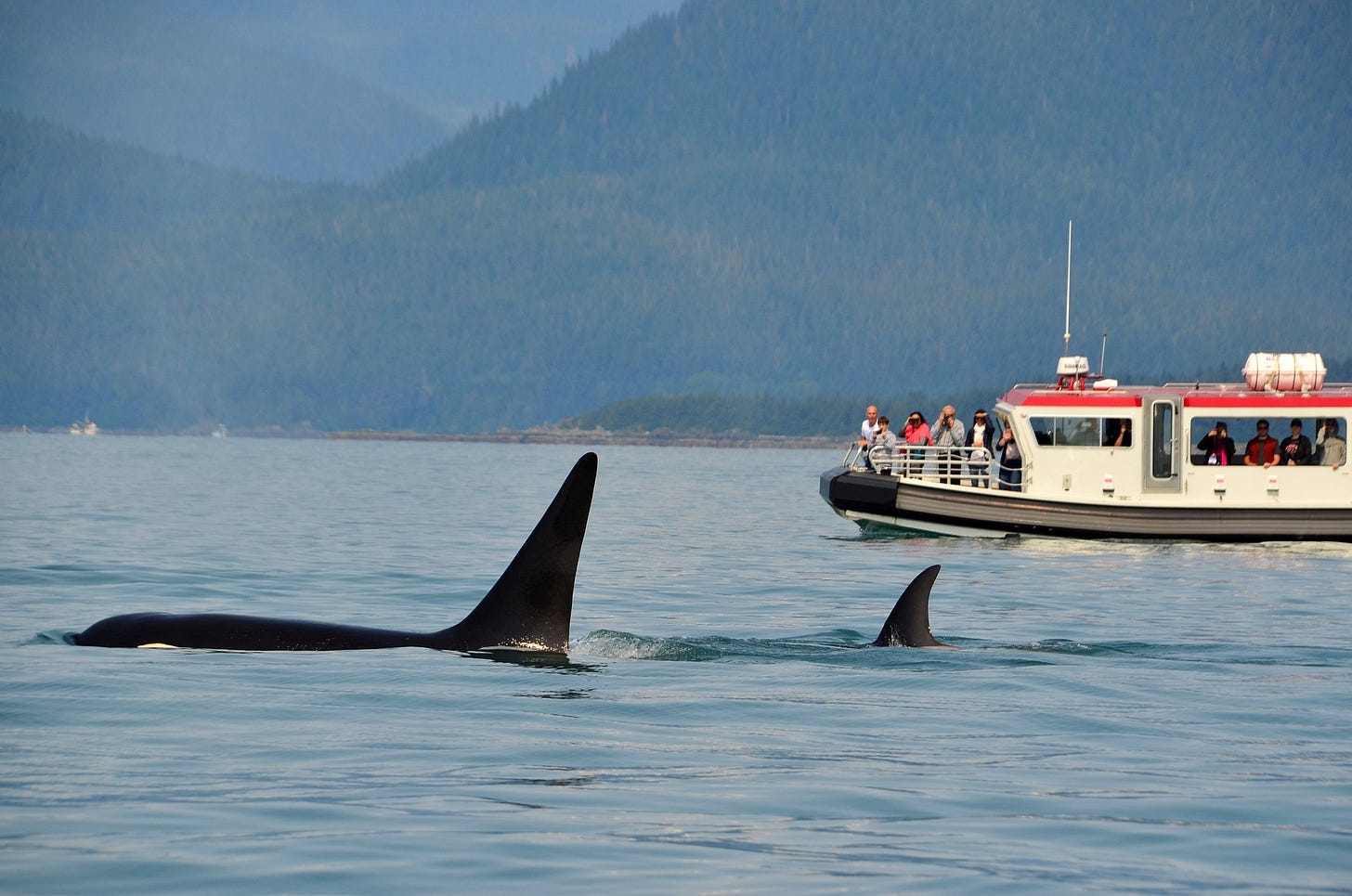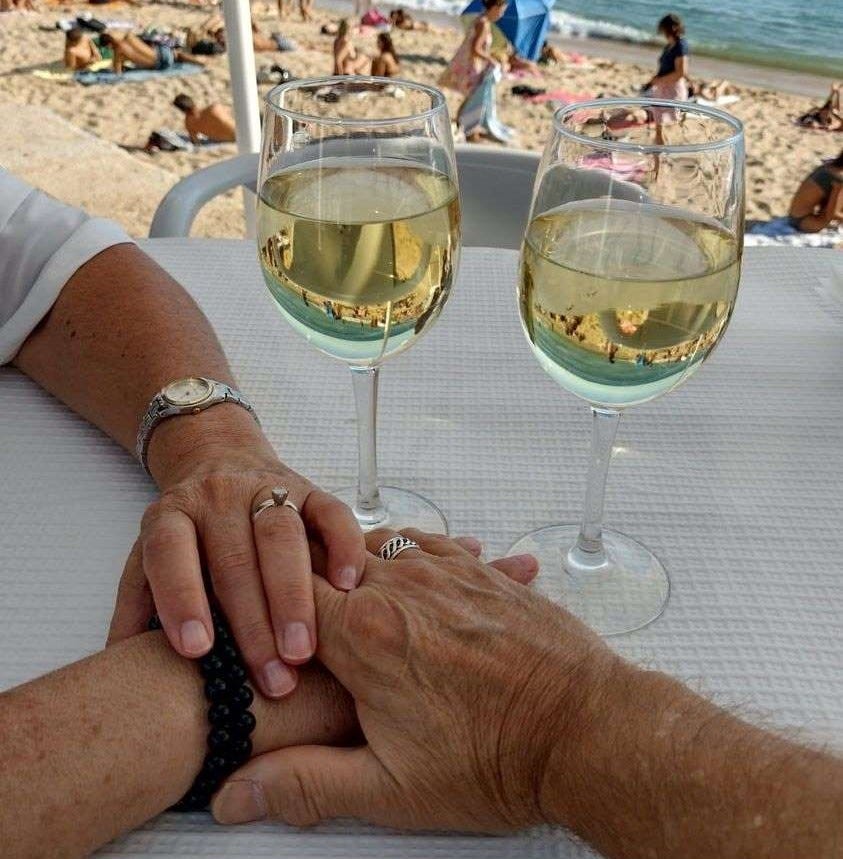Killer whales off the coast of Portugal
Some disruptive behavior going on

Recently, I read a news clip about a Swedish couple who were on board their boat off the coast of Cascais, Portugal when a group of orcas (also known as killer whales), rammed and damaged the vessel. The couple were not hurt in the incident, but their boat did sustain motor damage. The news clip also mentioned something I was unaware of – a particular subpopulation of orcas travel along the mainland Portuguese coast during their annual migration. But apparently in recent years, some of these giants have also caused disruptive behavior with an increasing number of them attacking small boats. Having no marine biology experience whatsoever, but living close to the coast, I decided to try to learn more about these creatures and why they’re suddenly becoming disruptive in Portuguese waters.
About orcas.
Candorcas (orcas) are cetaceans of the dolphin family and are the largest dolphins. They are not whales and they have teeth. Mature candorcas can measure up to 30 feet in length and weigh up to six tons. They travel together in family pods and despite their ‘killer’ name, they’re neither whales nor aggressive, and are highly intelligent and social. They like to interact with moving objects (like boats in motion).
The orcas that roam the Portuguese and Spanish coasts are known as Iberian candorcas, a subpopulation of the Atlantic candorcas. These orcas live in the waters of the Strait of Gibraltar during the spring and summer and then move along the Portuguese coast to Galicia Spain. From there they disperse – no one knows exactly where they spend the winter - and in the following spring, return to the Strait. These orcas make up a small subpopulation and are considered endangered.
Picky eaters.
Apparently, these mammals are picky eaters, feeding nearly exclusively on bluefin tuna and thus are categorized as super-predators. In other words, they go wherever their preferred food source is – and often that source is found around fishing vessels. It is not uncommon to see orcas harmlessly swimming near fishing boats, but in 2020, their behavior shifted.
Disruptive behavior reported.

Whereas in prior years, there was a peaceful coexistence between whales and sailors, in the summer of 2020, there was an increase in encounters between Iberian orcas and fishing boats along the Spanish coast with some vessels reporting the whales hitting and turning the rudders without any apparent provocation – sometimes continuing for an hour or more. The interactions occurred both during the day and night.
On July 31, 2022, two incidents with orcas were reported in Portugal. The first involved five people who were in a small tourist sailboat about six miles off the coast of Sines. Several orcas rammed the boat and disabled it. When the boat began to sink, the five people escaped on a life raft and radioed for help. They were eventually picked up by a fishing boat and all were shaken from the experience, but unharmed.
A few hours later, in the same coastal area, a second attack was reported when orcas butted a small boat with two people on board. The people were sleeping when the orcas attacked the boat and they awoke to the killer whales biting at the rudder, rendering the vessel disabled.
It’s important to note that only the Iberian orca subpopulation engage in this type of behavior.
A collaborative effort to learn more.
Spain and Portugal have come together to form a collaborative group to study and learn more about why these interactions are occurring by forming the Atlantic Orca Working Group. Consisting of researchers, scientists, sailing associations, and state organizations, their website offers a wealth of information on the migration and behavior of Iberian orcas. The group has developed a maritime safety protocol based on their findings.
The data that has been gathered so far suggests the attacks include all types of sailing vessels but only vessels in size from about sixteen to one hundred twenty-five feet in length. However, it appears that sailboats measuring from about thirty-nine to fifty-six feet are the most targeted. The interactions can last for an hour or longer, but most seem to last between fifteen and twenty minutes.
The orcas primarily focus on the mechanisms that cause vessel mobility such as the rudder. According to the Group, orcas know what a rudder is and what it does. As part of their safety protocol, the Group recommends that if orcas approach a boat, the engine should be turned off, and touching the instrument that controls the rudder should be avoided. They also recommend staying as calm and as quiet as possible and not yell or try to strike the mammals. By following this protocol, it appears to cause the orcas to lose interest in most instances.
Is it revenge or play?

It’s important to emphasize that orcas, if unprovoked, are not aggressive to humans and no person has been killed or seriously injured. Having said that, no one really knows for certain why this behavior is occurring. There seem to be two possible theories.
Revenge – Some theorize that this is a revenge tactic from a rogue orca pod resulting from an interaction with an illegal fishing crew and a harpoon strike on the pod by the poachers. It is thought that the crew were most likely frightened by the orcas and may have used harpoons to scare them off. The orcas in the pod that were traumatized by this event now hit and bite at the rudders of other boats, according to fishermen who are familiar with the pod, because it reminds them of the harpoon attack.
Play – Dr. Ruth Esteban of the Atlantic Orca Working Group suggests that these incidences are not revenge attacks but rather play. "They always seem to go for the rudder, and I think that’s because it’s a mobile part of the vessel. In some cases, they can move the whole boat with it. We see, in some of the videos, the sailing boat turning almost 180 degrees. If they see that they have the power to move something really big, maybe that’s really impressive for them," she said in an interview with the BBC.
Wrapping up.
I’m not sure if it’s revenge or play but as I enjoy observing marine life safely on shore, I doubt I’ll ever encounter an experience like this (and whale watching excursions for me are off the table) – but still, I find it fascinating! I often wonder (actually, I’m personally convinced) if animals of all kinds – be it on land or sea - are trying their best to warn humans about something and we’re just not paying close enough attention - or perhaps, we simply refuse to believe in the true intelligence, influence, and power of nature.
Thank you for reading Our Portugal Journey. This blog is a subscriber supported publication but has no paywall – in other words, you can subscribe for free and receive all the content. However, if you find my content valuable, please consider becoming a Supporting Subscriber for a nominal fee either on a monthly or annual basis right here. Just want to buy me a glass of wine? You can do that here.
Until next time…
Obrigada!
Carol.



Fascinating post!
Well done!! We've read the news articles but nothing, anywhere, has captured the detail you provide here. I truly appreciate the full context and insight on the studies of this phenomenon. We appreciate you!